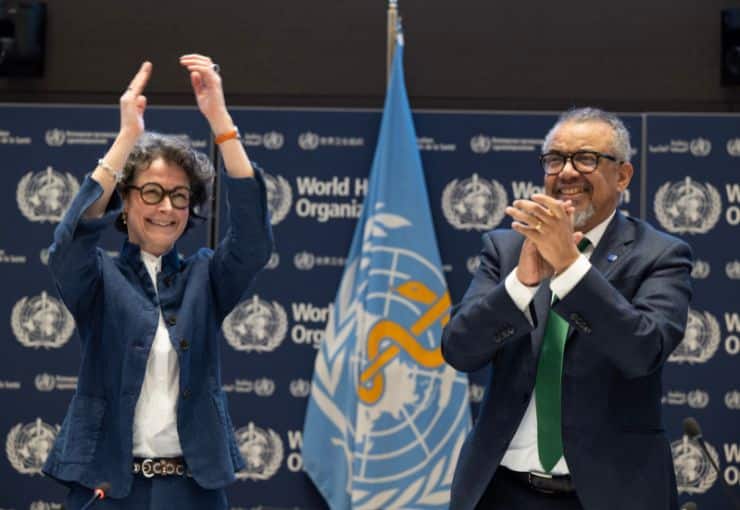Instead of reverting to austerity measures, governments should focus on alternative financing options to increase public finance ensuring universal and equitable access to quality healthcare. While the International Monetary Fund (IMF) advised most governments to temporarily increase health allocations to fight the COVID-19 pandemic, the most recent IMF country reports also contain advice to reduce health expenditures once the pandemic is over – together with a host of other austerity measures. These findings emerge from Ortiz & Cummins’ analysis, to which Wemos contributed, and are launched during this week’s 3-day virtual #EndAusterity event.
The world is off-track to reach the SDG goals by 2030 (see box below), and it is not likely to catch up either with the current new wave of austerity measures sweeping over the world. Worse, the adjustment shock threatens to hurt the lives of six billion people in 2023, or 85% of the world population spread over 143 countries of which 94 are low- and middle-income countries. Earlier austerity waves have taught that austerity undermines the capacity of governments to provide education, healthcare, social protection and other universal public services.
Austerity measures impact health and health systems
The End Austerity report (September 2022) reviews the latest 267 IMF country reports to identify the main austerity measures that Ministries of Finance and the IMF are considering in each country. Austerity measures include: scaling down social protection programmes, cutting or capping the wages and number of teachers, and health and local civil servants, eliminating subsidies, privatising or commercialising public services such as energy, water and public transport, and cutting government health expenditure. The latter will directly impact health and health systems, whereas the other measures will have an indirect impact.
Sixteen governments in seven low- and middle-income and nine high-income countries are discussing health budget cuts. Typically, health reforms include increased charges for health services, reductions in medical personnel, cost-saving measures in public healthcare centres, discontinuation of allowances, phase-out of treatments and services, and increased co-payments for pharmaceuticals.
Nine financing alternatives for sustained investments
Countries and their populations need more than just a temporary increase in health expenditure to deal with the Covid-19 emergency. They need sustained investments to strengthen health systems based on principles that ensure universal and equitable access to quality healthcare.
The report states that austerity cuts are not inevitable and that there are alternatives. Instead of cutting public expenditures, governments can increase revenues to finance people’s recovery. There are at least nine financing alternatives, available even in the poorest countries. These fiscal space financing options are supported by policy statements of the United Nations and the International Financing Institutions and have been implemented by governments around the world for years. They include:
- Increasing progressive tax revenues,
- Restructuring/eliminating debt,
- Eradicating illicit financial flows,
- Increasing social security contributions and coverage, including adequate employers contributions and formalizing workers in the informal economy with decent contracts,
- Using fiscal and foreign exchange reserves,
- Re-allocating public expenditures,
- Adopting a more accommodating macroeconomic framework,
- Official Development Assistance and other official transfers, and
- New Special Drawing Rights allocations.
Governments should focus on these alternatives to ensure universal and equitable access to quality healthcare. Considering the blow that health systems suffered due to the Covid-19 pandemic, the world needs to double down on both the quantity and quality of public spending for health! We should #EndAusterity now!
Also check out our fact sheet: ‘Fiscal space for health and four ways to increase it’





